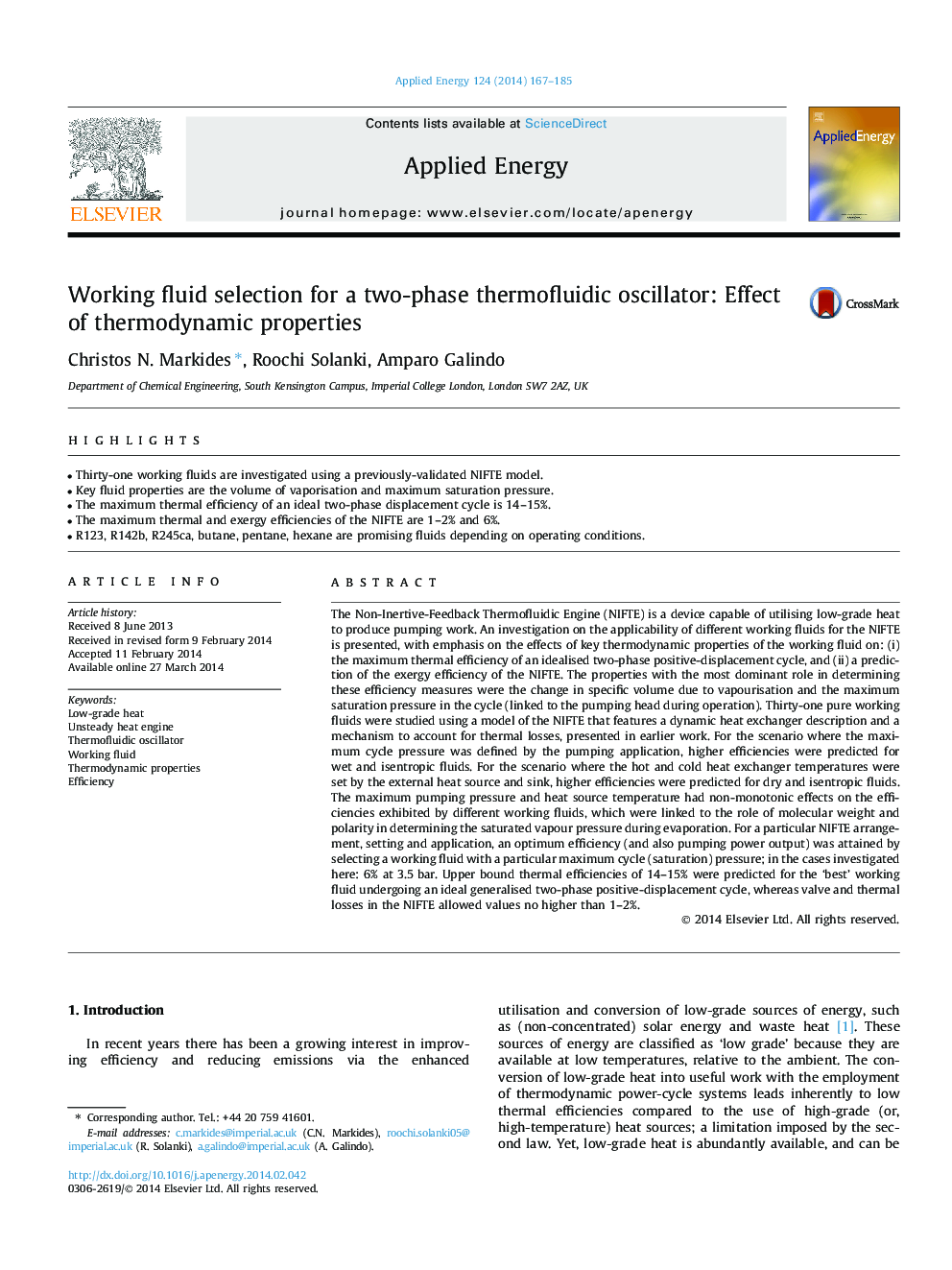| کد مقاله | کد نشریه | سال انتشار | مقاله انگلیسی | نسخه تمام متن |
|---|---|---|---|---|
| 242823 | 501903 | 2014 | 19 صفحه PDF | دانلود رایگان |
• Thirty-one working fluids are investigated using a previously-validated NIFTE model.
• Key fluid properties are the volume of vaporisation and maximum saturation pressure.
• The maximum thermal efficiency of an ideal two-phase displacement cycle is 14–15%.
• The maximum thermal and exergy efficiencies of the NIFTE are 1–2% and 6%.
• R123, R142b, R245ca, butane, pentane, hexane are promising fluids depending on operating conditions.
The Non-Inertive-Feedback Thermofluidic Engine (NIFTE) is a device capable of utilising low-grade heat to produce pumping work. An investigation on the applicability of different working fluids for the NIFTE is presented, with emphasis on the effects of key thermodynamic properties of the working fluid on: (i) the maximum thermal efficiency of an idealised two-phase positive-displacement cycle, and (ii) a prediction of the exergy efficiency of the NIFTE. The properties with the most dominant role in determining these efficiency measures were the change in specific volume due to vapourisation and the maximum saturation pressure in the cycle (linked to the pumping head during operation). Thirty-one pure working fluids were studied using a model of the NIFTE that features a dynamic heat exchanger description and a mechanism to account for thermal losses, presented in earlier work. For the scenario where the maximum cycle pressure was defined by the pumping application, higher efficiencies were predicted for wet and isentropic fluids. For the scenario where the hot and cold heat exchanger temperatures were set by the external heat source and sink, higher efficiencies were predicted for dry and isentropic fluids. The maximum pumping pressure and heat source temperature had non-monotonic effects on the efficiencies exhibited by different working fluids, which were linked to the role of molecular weight and polarity in determining the saturated vapour pressure during evaporation. For a particular NIFTE arrangement, setting and application, an optimum efficiency (and also pumping power output) was attained by selecting a working fluid with a particular maximum cycle (saturation) pressure; in the cases investigated here: 6% at 3.5 bar. Upper bound thermal efficiencies of 14–15% were predicted for the ‘best’ working fluid undergoing an ideal generalised two-phase positive-displacement cycle, whereas valve and thermal losses in the NIFTE allowed values no higher than 1–2%.
Journal: Applied Energy - Volume 124, 1 July 2014, Pages 167–185
